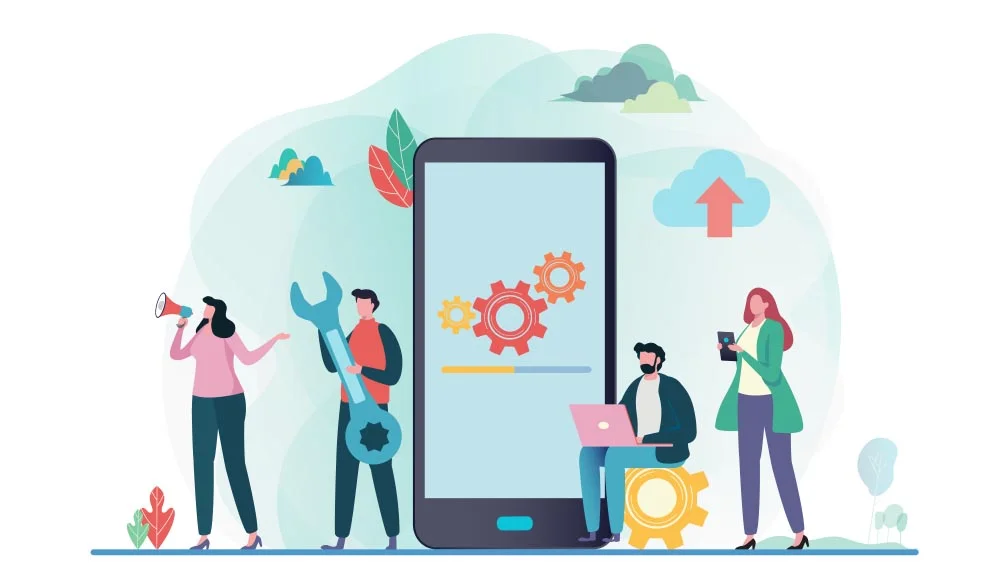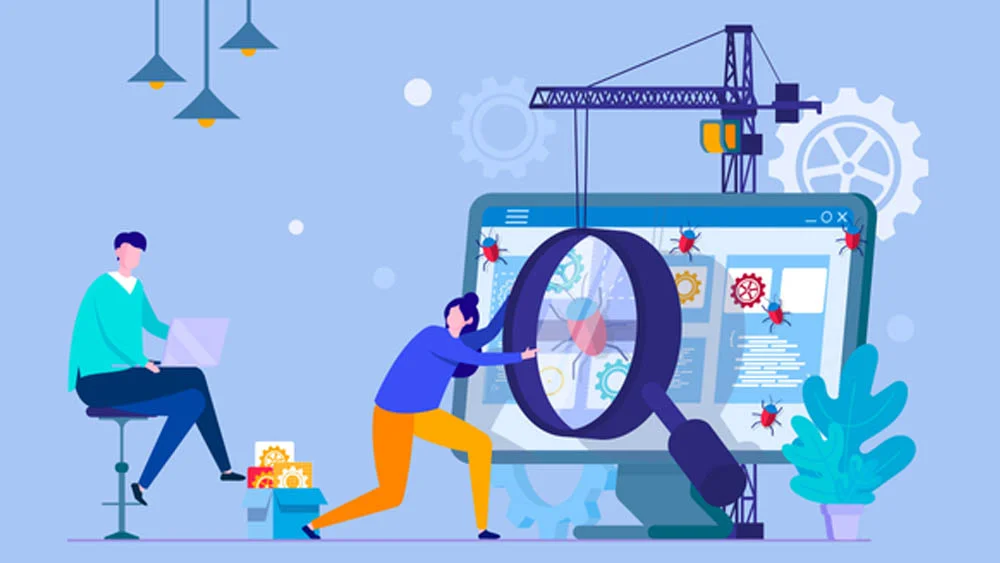The rate at which businesses are moving away from traditional development practices and toward low-code or no-code approaches is accelerating. In fact, findings from more recent research indicate that 84 percent of businesses are already shifting to no-code solutions. That is why we created this guide for you. To ensure you know how no code app testing works. Additionally, explain why no code is the future of technology.
That is in order to fill the technological void that a lack of developers leaves behind. Is the future of software development going to be low-code or no-code? Let’s begin with the fundamentals before delving into the specifics of the whole topic.
What is No-Code App Development? A Quick Overview
No-code development, also known as “low-code development” or “visual development,” is an innovative approach to the creation of software systems that makes it possible for anyone without prior coding skills to create software. Does it not sound like a breeze to do the work? I guess so.
In order to develop an application, it frequently makes use of graphical components, including items that you can drag and drop, components, and web-based forms. Because of this, it is simple for users to rapidly design, test, and deploy apps without the need for any human labor!
Simply put, no-code development enables even those who have never written a line of code before to create apps that meet their specific requirements. Therefore, no code is the way of the future.
Low-Code Development: What Is It Exactly?
The term “low-code development” refers to a method of software development that makes use of visual user interfaces and low-level programming languages in order to construct apps and business solutions in a more expedient and less complicated manner.
This method makes it possible for programmers to create applications more quickly than using more conventional methods of coding, which in turn enables them to take full advantage of the most recent technology and trends.
For businesses with a requirement to develop software applications rapidly and effectively, low-code development is the appropriate answer.
The Core of the “Testing” Process
On the one hand, software programs that nest in hierarchical systems consist of text-like code instructions. Furthermore, software applications involve input and output using physical computer components. Application, hardware, and the person using the software are the three most important elements involved in the process of utilizing software applications.
Developers who adhere to the standards, regulations, and specifications outlined by the technical goals write code. After a version of an application has been successfully developed, it must next be suitably integrated with the user’s system and the hardware at the destination.
This is where the function of the application tester comes into play; it fulfills the role of a communication channel or mediator between the application’s developers and its end users. When we define the role of application developers in such a wide manner, it allows us to see the consistency in the activities, and it also helps us analyze how the various technologies and approaches plug into and affect the whole process.
The History and Evolution of Testing
Over the years, testing methodologies for software have become ever more complicated in tandem with the ever-increasing complexity of software itself. Functional testing was the primary area of attention for the early approaches. However, as software has become more complex, developers have had to establish various types of testing to verify its quality. These testing types include user interface testing, performance testing, security testing, usability testing, and so on.
- Object-oriented testing is a testing methodology that was developed in response to the rise of object-oriented programming.
- Traditional functional testing is a less difficult testing approach than object-oriented testing. In a similar vein, the proliferation of online-based applications has resulted in the creation of web and web application testing.
In the years to come, testing tools and methodologies will grow in order to fulfill the requirements posed by emerging technologies and paradigm shifts in software development. Because they provide a less expensive option to gain access to excellent testing tools and platforms, open-source testing solutions will continue to gain popularity in the foreseeable future.
In the fast-moving modern world, organizations are required to deliver new software in a timely and effective manner. As a consequence of this, testers need to place an emphasis on speed and agility in order to guarantee that new software may be removed promptly without sacrificing quality.
No Code App Testing: The Growth of Low-Code and No-Code
One of the most fascinating developments in the fields of software and online development is the increasing prevalence of development with little or no code.
No-code or low-code development is a method that enables businesses to rapidly and effectively construct websites and software applications without demanding a significant amount of coding expertise from their employees.
Because of this form of development, businesses are able to rapidly build websites and software applications without the need to hire expert developers, which is excellent news for us.
The use of no-code or low-code development is very helpful for companies that have restricted spending budgets and few available resources. It makes it possible for businesses to construct apps in a quick and cost-effective manner while still delivering the necessary features and functionality for the applications.
We Still Haven’t Discussed Why No-Code Testing Is the Future Though
Don’t worry; there’s a whole specified paragraph that has the answer. A software application that is intelligent enough to execute a non-trivial human activity was unimaginable only a few short years ago. Now, however, such an application is a reality. The advent of artificial intelligence (AI) and machine learning (ML), on the other hand, has already blown the lid off a great number of previously held beliefs regarding content, design, and code, among other areas.
Virtually every large technology business makes significant investments in artificial intelligence and machine learning research, and many of these companies have already introduced their product suites onto the market, where they have met with varied degrees of commercial success. Companies like Microsoft, Oracle, and Zoho, among others, have previously made no-code application creation and delivery platforms available.
Let’s take a look at the present developer marketplaces as well as the state of low- or no-code development in comparison to traditional development in order to gain an understanding of the motivations for this change.
How Will It Be Without Low-Code or No-Code?
- Languages used for programming frameworks, abstraction philosophies, and other such things are all unique to each individual device and application platform. When confronted with a new tool or language, software developers and testers often find themselves wondering whether this is an innovative method for resolving the issue at hand or whether it will, in the long run, result in a loss of productive time.
- To be a quality tester is, in essence, to act as a seesaw between the business and the development teams. Their major goal is to ensure that they have a solid understanding of the functionality that the application intends to provide, after which they will collaborate with the technical team to assist with the program’s implementation.
- People who produce software products need to organize themselves into many teams so they can tackle various device platforms. This is not only expensive, but it also exposes the product to the risk of having a user interface that no one can standardize. This risk arises from the fact that different application platforms have different requirements. The proliferation of application development that works across multiple platforms in recent years has provided a recent short-term answer to this issue.
- Automation is the most effective method for testing modern applications, which requires the implementation of a large number of test cases. However, in order to deploy automation in an effective manner, testers need to have an in-depth understanding of the various automation frameworks. Every new piece of technology comes with its own learning curve, and in order to avoid being gradually out of date, developers and testers need to make the effort to keep themselves current.
The Many Benefits of No-Code and Low-Code Testing
There are many benefits that you should know in order to utilize the whole no-code or low-code testing to the fullest degree. Here are some of the benefits that we think you should know or at least be aware of:
Increased Productivity Through Your Process
You can increase the productivity of developers with no-code development. That is because it frees them from the burden of thinking about writing lengthy lines of code. Instead, they can concentrate on the design and the user experience. This enables developers to design better programs and websites with a higher level of user friendliness.
Easier Maintenance

The emergence of no-code and low-code applications makes it simpler to maintain websites and applications. This is due to the fact that every aspect of the application can be viewed and is straightforward to comprehend. The developers are able to immediately discover any problems and correct them as soon as they can.
A Better Rate of Efficiency
Platforms that support no-code and low-code development make it possible for programmers to build applications using fewer resources and in a shorter amount of time. This enables businesses to launch applications in a more timely and effective manner.
A Higher Rate of User Engagement
Developers have the ability to create applications for consumers that are more engaging by utilizing no-code or low-code development. This is due to the fact that the user interface has been made more straightforward and intuitive. This helps users stay interested for longer and encourages them to interact with the program more frequently.
Simplicity and Ease of Usage
Users are able to quickly construct apps with no-code and low-code platforms because they are meant to be simple to comprehend and use. Users do not need to learn difficult coding languages to use these platforms. Because of this, they are perfect for developing apps without the need for a significant degree of prior technical knowledge.
Since these platforms are designed to be straightforward to understand and operate, users of no-code and low-code environments are able to swiftly construct applications without the need to become proficient in complex programming languages. As a result of this, they are ideal for designing applications without requiring a significant amount of skill in technology.
Final Thoughts!
To put it simply, this article is all about emphasizing how no-code solutions are transforming our lives. These solutions are making everything easier, faster, and more efficient. No-code solutions are indeed the future of app testing and app development. For that reason, we present you with nandbox’s native no-code app builder.
An app builder that you can use to create apps from scratch. Apps that work seamlessly and can be published on both the iOS and Android stores. Sign up now and unlock your app development capabilities with us!





